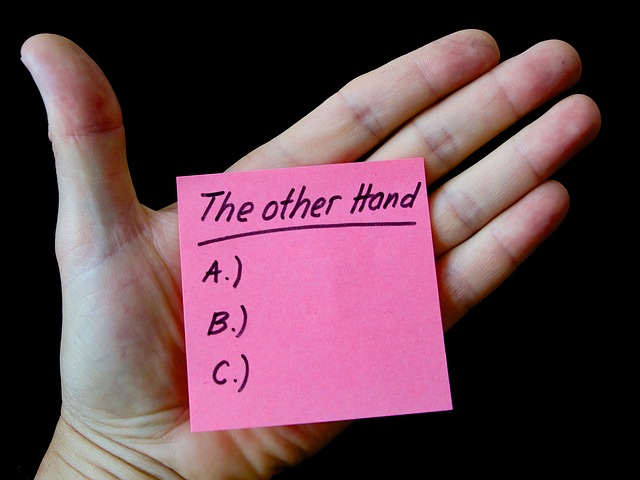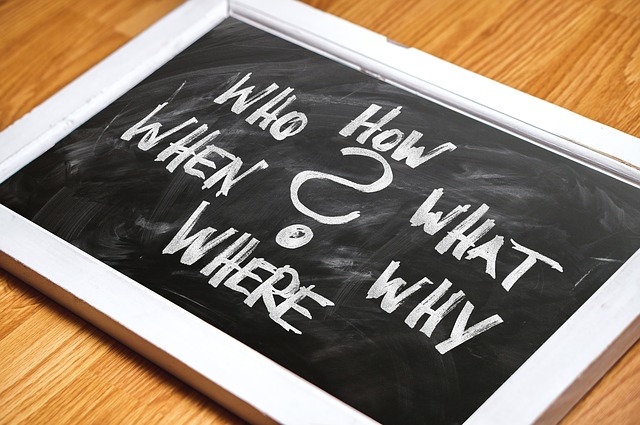วิธีเขียน Argumentative Essay
การเขียนเรียงความโต้เถียง – ARGUMENTATIVE ESSAY
ในการเขียนเรียงความโต้เถียงนี้ ต้องแสดงเหตุผลในสองด้าน เหตุผลเพื่อสนับสนุนด้านหนึ่งและอีกด้านคือด้านที่เป็นข้อโต้แย้ง โดยที่ทั้ง 2 ด้านต้องแสดงเหตุผลโต้แย้งเพื่อสนับสนุนเหตุผลในการโต้แย้ง แต่ควรมีความสมดุลในเหตุและผลที่จะนำเสนอโดยอาศัยต้องใช้ข้อมูล สถิติและข้อคิดเห็นสนับสนุนประกอบ
สิ่งที่นำมาสนับสนุนความคิดจะต้องโน้มน้าวผู้อ่านให้เชื่อประเด็นที่คุณโต้แย้ง สิ่งสำคัญคือข้อมูลสนับสนุนต้องน่าเชื่อถือ และเป็นเรื่องจริงพิสูจน์ได้ มาสนับสนุนงานเขียนประกอบกับการวิเคราะห์ให้ผู้อ่านเชื่อและคิดว่าความคิดเห็นของผู้เขียนถูกต้อง
นอกจากนี้เรียงความประเภทนี้ต้องแสดงจุดยืนถึงประเด็นเหตุผลอย่างชัดเชนผู้อ่านเห็นชัดเจนว่าทำไมคุณจึงไม่เห็นด้วย
Argumentative Essay
Purpose: To present an argument to support a particular opinion or position.
Introduction: Explains why the subject is of importance and sets out the thesis.
Body: Presents evidence to support the thesis, stating why the evidence supports the thesis. May also explain why opposing views are inaccurate, ill-informed or outdated.
Conclusion: Re-addresses the original thesis in light of the evidence provided.
Language: Choice of vocabulary should influence readers’ emotions.
Other considerations: The argumentative essay will be based upon well-researched evidence, which must be cited.
>>> สั่งงานเขียนกับ Native Writer งานคุณภาพ แกรมม่าเป๊ะ คลิก! >>>
ตัวอย่างการเขียน Argumentative Essay
It is Time for the NHL to Ban Fighting in Ice Hockey
The National Hockey League (NHL) is one of North America’s four major sporting products and is broadcast all around the world. Unfortunately, the image the sport projects is tarnished by the fact that many people associate ice hockey with violence – specifically the fights which often break out between rival players (espn.com, 2013). Although fighting has a long historical connection with the game, it is now the time for the NHL to stamp out this barbaric practice. When players drop their gloves and start throwing punches, the sport ceases to be about healthy, sporting competition. The brutal act sets a terrible example for young spectators, can result in severe long-lasting damage to combatants, and has no place in a modern civilized country.
Although rare in foreign ice hockey leagues (Koppikkeinna and Harpitaaskki, 2009), fighting has been commonplace throughout the long history of the NHL (espn.com, 2013). Teams typically employ one or more players who have limited hockey skills but who are proficient pugilists, and therefore known as “enforcers”. The role of these players is supposedly to protect their team’s star performers from physical harm by projecting an aura of menace. In theory, opposing players know that any act of aggression will result in swift retribution (Cherry, 2004). This notion is a fallacy, since the league’s rules allow minimal punishment for fighters (5 minute penalty) only on the condition that the fight has no clear instigator; i.e., the fighters agree to begin fighting simultaneously (nhl.com, 2014). For this reason, enforcers invariably only fight against each other, and often for no reason other than to prove their value to their team. They are paid to fight, and thus they stage fights whether or not the game itself offers any genuine cause to do so (Cherry, 2004; Hockeystats, 2011). These fights are therefore an irrelevant sideshow which serves no purpose other than to grant employment to players who are otherwise not good enough to play professional hockey.
While fights between enforcers rarely have any influence upon the game itself, the consequences for the players involved can be far more serious. As the medical profession’s understanding of concussion injuries increases, it is becoming perfectly clear that receiving punches to the unprotected head will have terrible results in the long term. As Cherry (2004) points out, impaired mental functions are one risk, while the NHL has already witnessed the suicides of two enforcers in recent years, with inferences being drawn that the players’ on-ice role was a significant factor behind their tragic decisions (Morgue, 2007). When the NHL does not take measures to eliminate fighting, the NHL must accept upon its conscience the fate of these two players, along with those who will surely follow in the future.
Although it is clear that fighting is tactically ineffective (Hockeystats, 2011) and imposes a terrible cost upon the combatants (Morgue, 2007), many commentators have argued that the presence of an enforcer prevents injuries to the highly-skilled superstars of the league (Purdue and Kavick, 1998). The case of the great Wayne Gretzky is often cited, with the explanation that he was protected throughout his career on the ice by the enforcer, Marty McSorley. It may well have been the case that Gretzky would have been marginally less effective without his enforcer at his side, but the era in which Gretzky performed cannot be compared with the present day. Rule changes have effectively eliminated the both the intimidation Gretzky might have faced and the methods McSorley employed in defence of his team-mate (Purdue and Kavick, 1998; nhl.com, 2012). For evidence of this one need look no further than the NHL’s play-off matches at the end of each season, where despite the raised stakes, the incidence of fighting almost disappears when it is imperative that every player on the ice makes a contribution to the team through his skill rather than his fists (Hockeystats, 2011).
From the evidence presented, it is clear that the rules governing NHL hockey have changed over the years (nhl.com, 2014) to the extent that fighting has become an anachronism. Its original purpose has been eliminated and the players who continue to drop the gloves are a throwback to a bygone era. The image of the sport can only be enhanced through the promotion of a fast and skillful on-ice product which can appeal to a worldwide family audience, while the protection of all players’ health and safety must be a priority for the NHL (Shanahan, 2013). The continued presence of enforcers reflects very poorly upon the NHL, the game of ice hockey and our society at large. The NHL must therefore not hesitate to take the required action to clean up its act.
(Disclaimer: The citations in this essay are for example purposes only and do not necessarily refer to genuine information sources.)
>>> สั่งงานเขียนกับ Native Writer งานคุณภาพ แกรมม่าเป๊ะ คลิก! >>>



